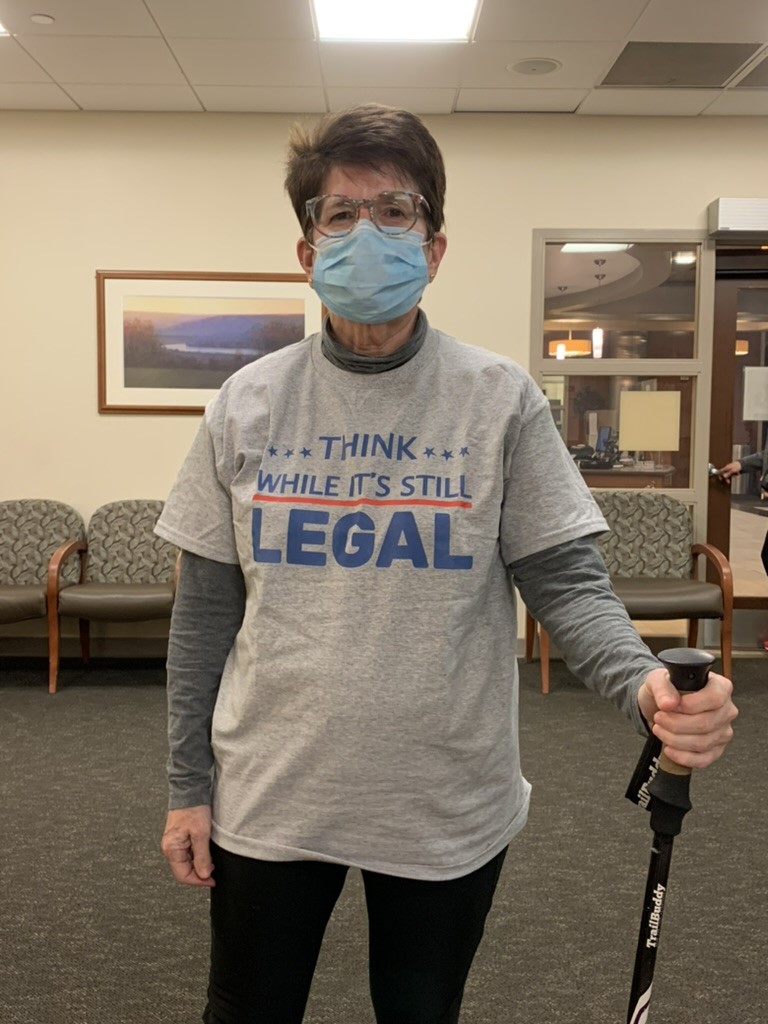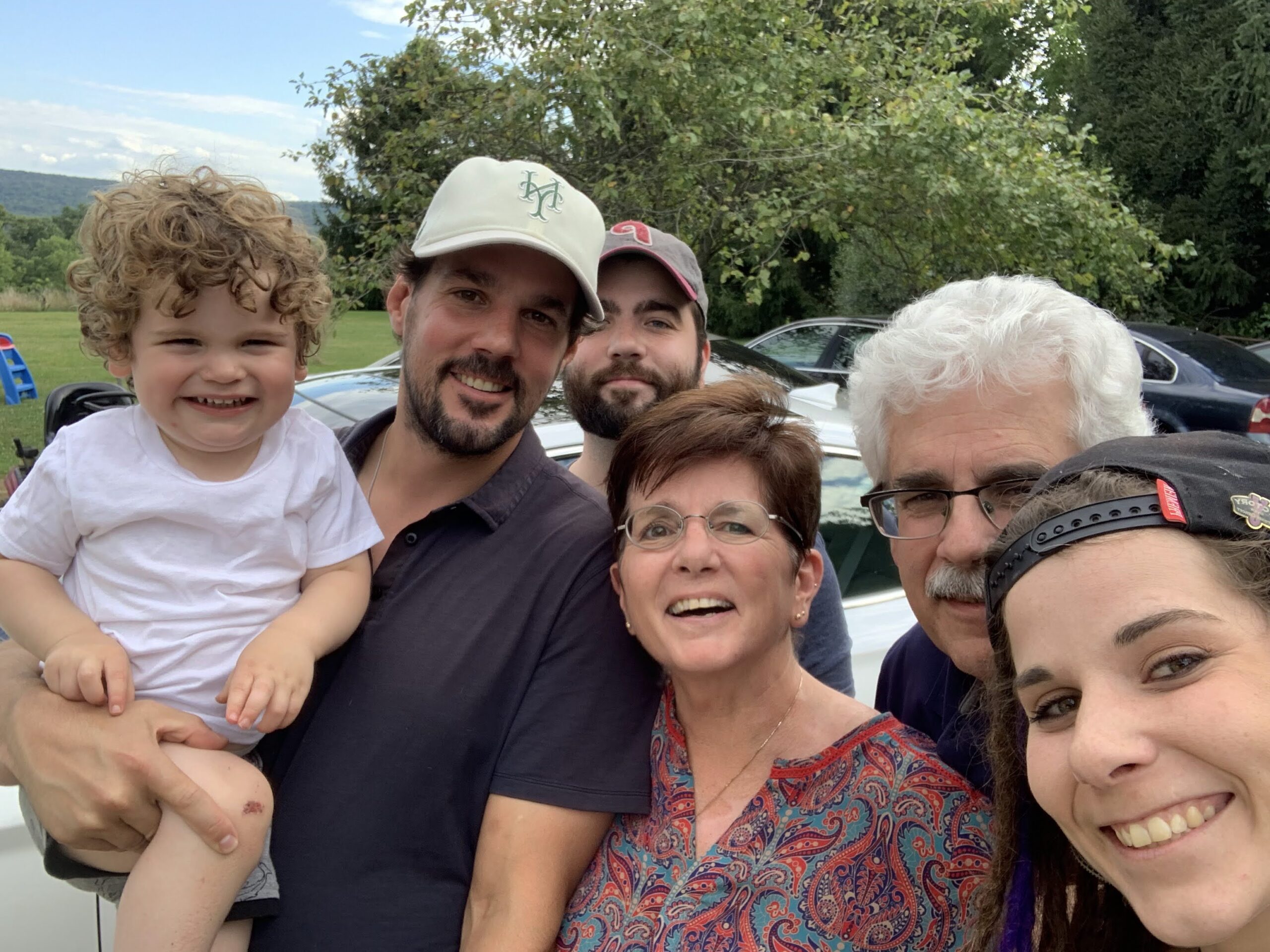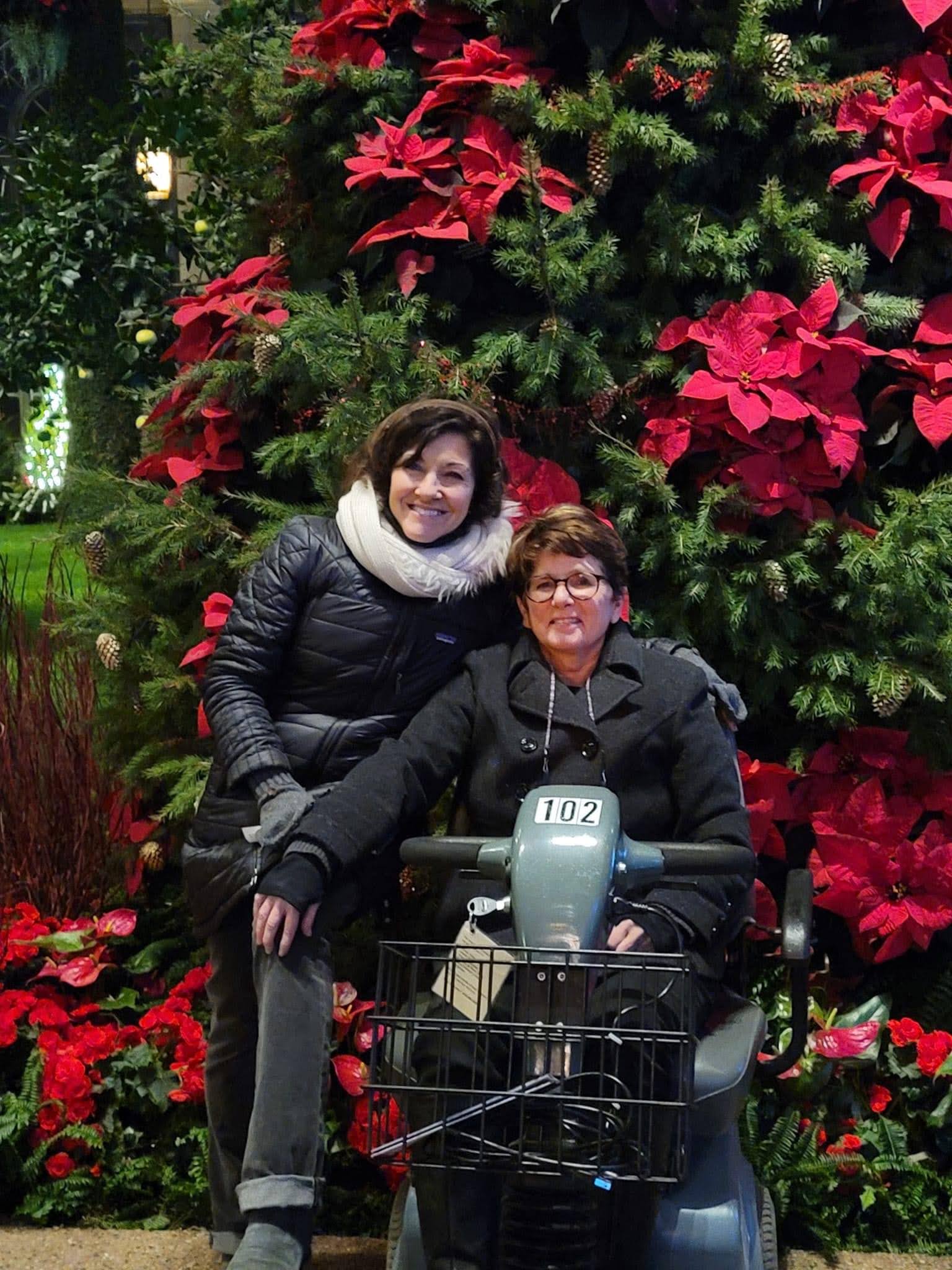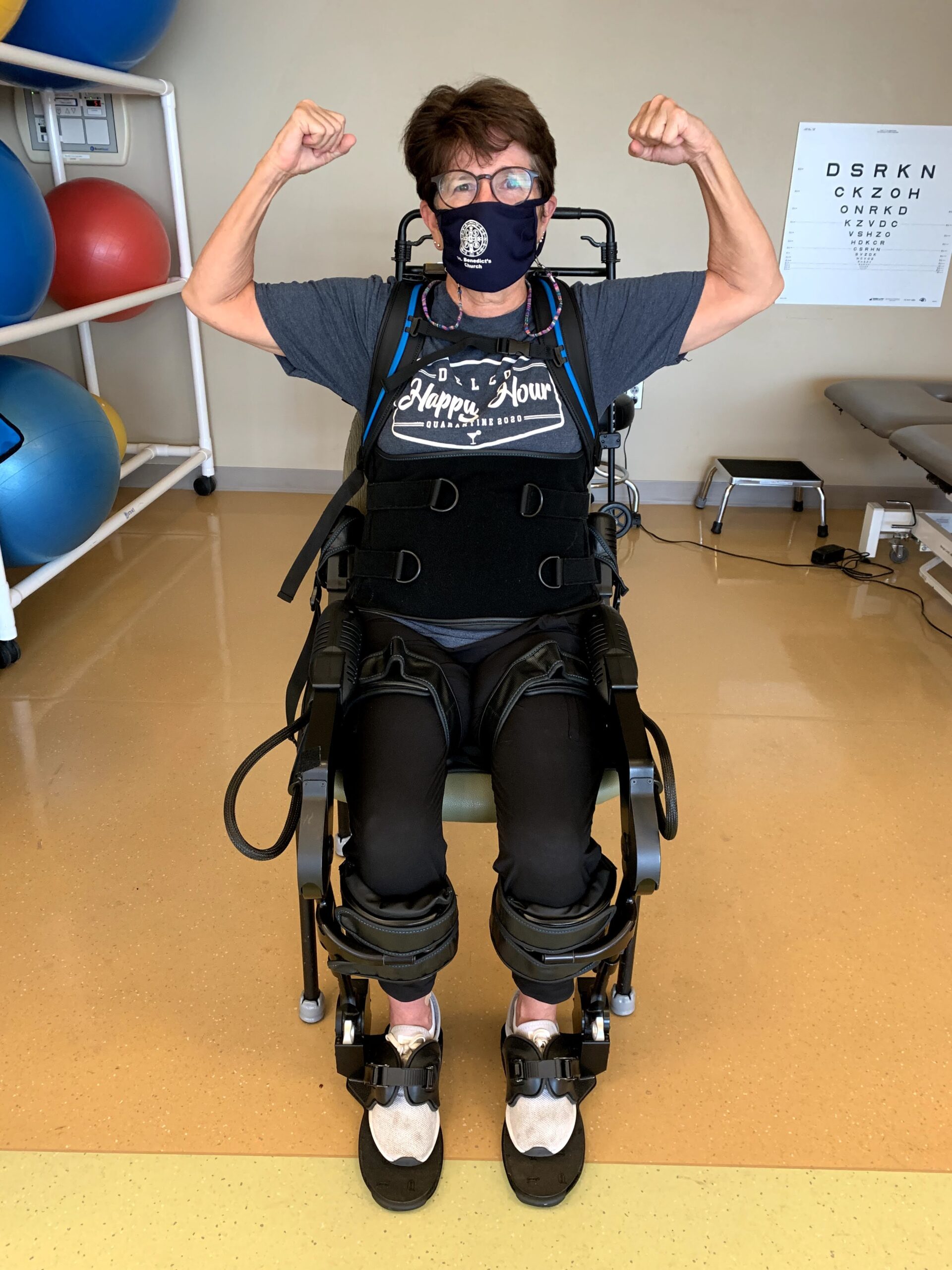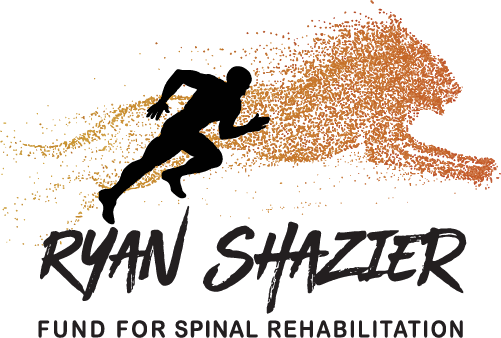Travel Overseas With a Spinal Cord Injury? Yes, Please!
Our writer braved the friendly transcontinental skies on a flight to Germany. Here’s what she learned!
When your son, who has been playing professional ice hockey in Europe with success, decides to Christmas gift you and your husband a two-week, all-expenses paid trip to Germany to see him play, what do you do?
Of course, you say, “Yes!”
And that’s though you have a C3-C7 spinal cord injury and are quad, struggling with extreme spasticity, and don’t own a wheelchair because you’ve been able to work enough to walk short distances with hiking sticks.
But Germany? To see son play hockey? Let the planning begin!
We had three weeks to get our ducks in a row, and by no means was I confident that my husband Jamie and I could pull this off. We had taken short, overnight trips, but nothing like this.
The Slip N Fall That Almost Took Me Out
Long story short, I was injured in a slip-and-fall accident at home, shattering my cervical vertebrae, C3-C7, compromised by severe degenerative disc disease.
Huh? Yeah, I thought it was family arthritis and had ignored it.
That was in March 2020. I was told (at that time) that my future was a wheelchair with a joystick.
Three months later, I “walked” (with a walker) out of Hershey Medical Center, PA, to begin a badass life of physical therapy, research, and later a new writing gig with the Ryan Shakier Fund for Spinal Rehabilitation.
(Thanks to a killer rehab team, and an abundance of writing material, I’m still in rehab and still content writing.)
Since my March 2020 accident, I’ve had very few “down” moments. But in November 2022, the treatments were wearing on me. I was having extreme spasticity and tons of pain. The Botox treatments to reduce my spasms had worn off, and my right side was a pain-filled popsicle stick.
Finishing writing assignments, fulfilling Church duties, and doing the “Mom” stuff for the holidays (all of which I love) seemed like more of a bother and a chore. I spoke with a priest about feelings, and he gave me some advice that helped me and still does.
So, in somewhat chronological order, here is what made our first (and not our last) transcontinental trip somewhat successful.
Dos:
Get Your “Preferred” Seats
Our son booked us on Lufthansa, which contracted with Eurowings for our flights.
As soon as I knew our bookings, I contacted Eurowings and scheduled our handicapped seats (which I like to term “preferred”), giving them my handicapped priority seating status card. I was told I would receive an email with the confirmation.
I did not receive that email confirmation.
I called the next day. This time, I got a different agent who said they never send email confirmations. We went through the process again.
Remarkably, it was different, and she gave me the seats we wanted (bulkhead seats with nobody in front of us). She did a couple more steps that made me feel more secure with this process, including charging me the extra $125 per seat for the extra legroom.
She even booked the same seats for the return flight, assuring me that if we didn’t like them we could change them since the flight was half-full.
Lesson Learned: If you are not comfortable with the process, and don’t receive a promised email, call again.
Arrive Early
I know, they always tell you this. But in our case, it’s essential. We pulled up to the terminal gate (our youngest son drove), and as soon as I exited the vehicle (Ankle-Foot Orthotic—AFO) brace on, walking stick, a gentleman was there to greet us, seat me in a wheelchair, and whisk us through arrival, including our bags. He helped us with baggage check-in, and ticket verification and handed us off to a “tram car,” which squired us through customs and to our gate.
He also ensured we sat in seats marked with “Handicapped” decals so that we wouldn’t be missed.
Sure, we had an hour to wait for our plane. But no stress. And if you know the Philadelphia airport, there are plenty of coffee and bagel shops for breakfast
Make Sure You Board First
Anyone who has flown has seen it: the “entitled” passengers that feel they are special enough to board before everyone else. Well, they might be able to board before the able-bodied guests, but not those that need special assistance.
Since this was my first time flying as a disabled guest, I was acutely aware of these other guests, mainly due to my imbalance. I was behind Jamie, an engineer, not an M.D. Not one to speak up, he set up a human shield, even once saying, “Winna trade places with her?”
He made sure the other disabled passengers and we were first to board. We got to our seats, the first row of passengers with special needs. I sat down and let him handle the rest. He has a “looks can kill” stare, so suffice it to say we had no more problems boarding.
Those seats were lovely—lots of legroom; we got served first and got off first, too.
The bathroom was midway down the aisle. They had a handicapped-accessible one, which I got to use once. The other times’ able-bodied men were in there. As my pants are hard to pull up, I was annoyed, but not annoyed enough to say anything.
Lesson Learned: A leopard can’t change their spots: How many times are the handicapped restrooms used by people that just want extra room?
The Ride: An Average of Eight Hours
Now that you’re situated, and buckled in, have your Kindle and your book; it’s “Go Time!” I’ve flown plenty of times, but not with hardware in my neck and back. It didn’t bother me.
What did bother me was sitting that long. I’m not used to being that “still” for so long, so thankfully, we had the bulkhead seat, and I’m small. I could maneuver around, stand, sit in funky ways, and keep my body moving enough that the confinement wasn’t overbearing. But eight hours of it took a toll on my “divergent” self.
Deplaning: Don’t Fret It!
We took a non-stop to Frankfurt, Germany, and with a tailwind, it took 7.5 hours. As we were arriving, we were told we would deplane first, and at the end of the exit there was a wheelchair for me.
It took me to a waiting area, and after a short wait, we were taken to customs, where we were processed and shortly saw our son. He had prepared, knew the wheelchair requirements, and had one for me.
All in all, from our home in rural Pennsylvania to our son’s apartment 30 min east of Frankfurt, it took 12 hours.
I attribute that to careful planning, not taking “No” for an answer, and for all of us keeping our cool when things could have gone south fast.
In Country: Take Time to Relax!
Our son secured us a wonderful Air BnB for our 10-day stay. It was not any more than a hotel and had everything we needed:
Our son booked us an Air BNB, which was not more expensive and much more comfortable than a foreign hotel. We had two bedrooms, two baths, a living room, a kitchen, big bath with a copious shower and bath, and a small porch.
The Air BNB was very comfortable, despite my disabilities. Since we were visiting our son’s team, they provided us with a wheelchair, and I had my walking sticks, which were not a problem
The team provided us with VIP seating in the unique accommodations, so all in all we were made comfortable among the other special guests. We didn’t see others with other disability problems along the trip,
The only “issue” was that the country which was nice to see up as the USA is for US Americans with Disabilities Act.
But we managed.
One thing we did for our son. This wasn’t a problem, as the team guested we were set up for US disabilities and had had more than a week preparing for such overreaches. We contacted each place we planned to visit to ensure they were ready for our accommodations. All but one could accommodate us, and that wasn’t an issue. We changed our plans and carried on!
We visited restaurants, and though they weren’t “set up” for disabilities, they made it work. Our big visit was to the rinks, and they knew we were coming a head, and were very low-key and accommodating. And they were very healthy in the museums equipped for accommodations.
A First Successful Trip
For our first time traveling overseas with a severe injury, we did well. The team, Bad Nehalem, did exceptionally well in ensuring we were well-situated and had what we needed for a good time. All of our needs were more than met with little questions, needed, and our accommodations were first class, et up by our son, Tim, #6 (even though he is a forward and the wearer of the “Gold Helmet” as top scorer.)
Long Time Gone
We were able to leave later; almost two weeks–12 days–a little more than we had planned. I didn’t get all the chances I wanted to do physical therapy; I did my MedBrideGo apps that my PTs loaded onto my tablet for me. But I didn’t get the gym workouts I was hoping for, and my spasticity returned with a vengeance.
(The subhead is the title of David Crosby’s book, “Long Time Gone.” In contrast, I was writing about cars. I had a relationship with him on UseNet fan site.)
When he came to Philly, David Crosby invited me backstage. I took my five-year-old daughter because we traded stories about her and his five-year-old son on UseNet. When we got backstage, she gave Croz a walrus drawing and Graham Nash a drawing of a giraffe. Croz asked for a hug, and she refused, saying, “I don’t hug people I know but have never met!” He died when we were in Germany at 81; his passing cast a pall over us all. We watched a lot of Crosby, Stills, and Nash (and sometimes Young) videos on YouTube,
Crosby’s voice inspired me to become a jazz tenor saxophone player. I majored in sax in college and had a local career until I obtained the hand limitations that come with cervical spinal cord injuries. (But I haven’t given up on it, the clarinet or flute!)
Flying home–Slightly Different
Boarding in Frankfurt, one of the biggest airports in the world, was a bit dicey. We got there super early, and lo and behold, a wheelchair was waiting for us.
But…an airport that big only had three transport tram vehicles, and we waited by the cold entrance to be picked up–just in time. Jamie and I were getting nervous, but the German transport got us to our boarding location in the nick of time.
Due to a headwind, the trip was nine hours home, and the time difference (six hours) made a difference for me going to and from Germany. Consequently, the trip back brought on a high level of spasticity and severe foot drop, even though I tried getting up to walk the aisle.
Back to PT
My spasticity was still high, so my husband drove me to therapy. The PTs were disappointed in my “backwards slide,” but it wasn’t what I was supposed to be–in a wheelchair with a joystick!
I jumped right back into PT and OT, but sadly my 2.5 years of forward progress had ended, and I am temporarily discharged. BUT!! I get to return to Exoskeleton therapy for a much smaller fee than the one charged. Of all my therapies, the “exo” is the most challenging and effective in bringing me back to “somewhat leg life.”
If You are Worried, Plan and Try
I worried about losing some of my progress, which I did.
I was nervous about traveling transcontinental, but my PTs and OTs had set me up with several excellent exercises on an app on my phone. I could do them every day, but I missed going to the gym and lost muscle tone. As such, I was “wibbly,” spastic, and lost much of my endurance due to riding long hours in the car.
But seeing our son playing again in a foreign country (he spent four years in Switzerland and three years in Alaska, which was also a great trip.)
Traveling to Switzerland was before my injury; Germany was after the injury. The hardest thing I had to do was adjust what I wanted to do vis a vis what my body could do.
But it was worth it. We met his friends and his coaches and saw some excellent hockey.
Most importantly, the airlines and Germany were long, but there were few handicapped passengers on board, and they ensured they checked on us frequently.
Next year, I’ll be working my a$$ off all year. We are planning Germany and one of our all-time wishes, Rome and the Vatican.
Shalieve
Wisdom
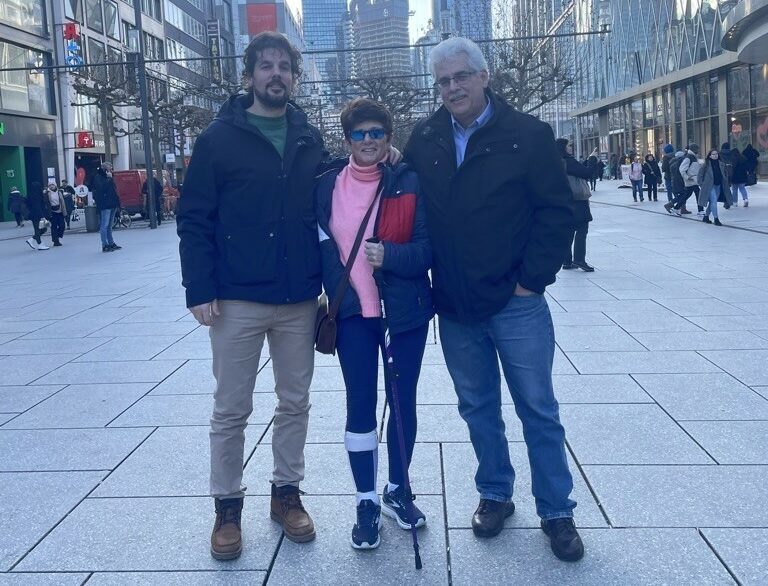
1: Don’t rush–leave more than enough time to be at the airport. Philly is a nicer ‘port, and one I grew up three miles from, so we knew the ins and outs quite well (before they barred people from meeting passengers at the gate). We knew there would be great eateries and shops there. We ate, but didn’t buy anything!
2: Don’t forget your extea bag–you get one as a disabled person! I took a shopping bag with shoes, meds, books, pain rubs and meds, and my maintenance meds. Nobody checked them–I guess the AFO and stick was enough to convince them!
3. Don’t forget to ask for extra bottles of water. I don’t know about you, but my meds dry me out! At night I drink 48 oz. of water, and though we can’t take bottles filled with water, I alerted the attendant to my needs. Whenever she saw my bottle empty, she brought me a new one. The flight attendants for the flight to Frankfurt were the most attentive and thoughtful we had. And with my former magazine job with a trade car magazine, I flew to Europe more than a few times.
4: Don’t forget to change your money at your departing airport. The machine gave comparable rates (we checked), and we were going to Germany–a popular destination. We changed our money before we got on the plane, and we are glad we did. We could leave tips, treat our son and Nastja, and pick up little things at the Porsche Museum.

